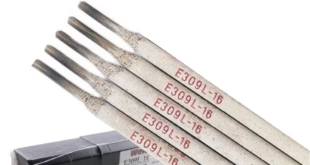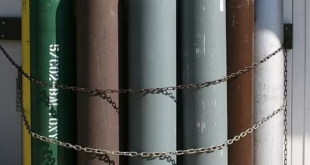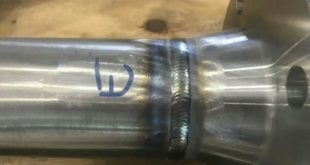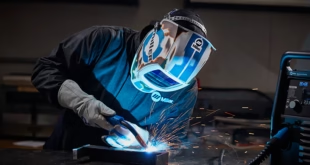2T vs. 4T in Welding – What Is It? Difference Explained
Welding is an essential skill in many industries, from construction to manufacturing. As technology advances, so do the techniques and tools available to welders. One such advancement is the introduction of 2T and 4T modes in welding. But what do these terms mean, and how do they impact your welding projects? Let’s dive into the details and clear up any confusion you might have about 2T and 4T in welding.
What is Welding?
Welding is a fabrication process that joins materials, usually metals or thermoplastics, by causing coalescence. This is typically done by melting the workpieces and adding a filler material to form a strong joint. Welding is a critical process in numerous industries, including automotive, aerospace, and construction, due to its ability to create strong, durable bonds.

Understanding 2T in Welding
Definition of 2T (Two-Touch)
2T, or two-touch, is a welding mode that simplifies the control of the welding torch. In 2T mode, you press the torch trigger to start the welding process and release it to stop. It’s as straightforward as flipping a switch on and off, making it a user-friendly option for many welders.
How 2T Mode Works
When you press the torch trigger in 2T mode, the welding machine begins the arc and continues until you release the trigger. This continuous operation is ideal for short welds or situations where precision is less critical.
Common Applications of 2T Mode
2T mode is commonly used in applications where quick, short welds are needed. It’s particularly useful for spot welding, tack welding, and other tasks that don’t require prolonged control of the arc. Hobbyists and beginners often prefer 2T mode due to its simplicity and ease of use.
Understanding 4T in Welding
Definition of 4T (Four-Touch)
4T, or four-touch, is a more advanced welding mode that provides greater control over the welding process. In 4T mode, you press and release the torch trigger to start the weld and press and release it again to stop. This mode allows for hands-free operation, which can be beneficial for longer welding tasks.
How 4T Mode Works
In 4T mode, pressing and releasing the trigger initiates the welding arc. The arc continues without needing to hold the trigger, allowing you to focus on guiding the weld. To stop the arc, you press and release the trigger again. This feature is particularly useful for long, continuous welds where maintaining a steady hand is crucial.
Common Applications of 4T Mode
4T mode is ideal for applications that require extended, precise welds. Professional welders often use this mode for tasks such as pipeline welding, structural welding, and any project where maintaining a consistent arc over a long distance is essential.
Differences Between 2T and 4T in Welding
Operational Differences
The main operational difference between 2T and 4T modes lies in the control mechanism. In 2T mode, the welder must continuously press the torch trigger, which can be tiring for longer welds. In contrast, 4T mode allows for hands-free operation once the arc is initiated, providing greater control and reducing fatigue.
Pros and Cons of 2T
Pros:
- Simple and easy to use
- Ideal for short welds and quick tasks
- Suitable for beginners and hobbyists
Cons:
- Requires continuous pressure on the trigger
- Less control over long welds
- Can cause fatigue during extended use
Pros and Cons of 4T
Pros:
- Allows for hands-free operation
- Greater control over the welding process
- Ideal for long, continuous welds
Cons:
- More complex to use
- Not suitable for quick, short welds
- May require more practice to master
Choosing Between 2T and 4T
Factors to Consider When Choosing
When deciding between 2T and 4T modes, consider the nature of your welding projects. For short, quick tasks, 2T mode might be the best choice. If your work involves long, continuous welds, 4T mode will likely provide the control and comfort you need.
Suitability for Different Welding Tasks
2T mode is suitable for tasks such as spot welding, tack welding, and short welds. It’s an excellent choice for beginners or for jobs that don’t require prolonged welding. On the other hand, 4T mode is better suited for professional welders working on extensive projects that require precision and control over longer periods.
Advantages of Using 2T and 4T Modes
Efficiency and Control
Both 2T and 4T modes offer unique advantages that can improve efficiency and control in different welding scenarios. 2T mode provides straightforward operation for quick tasks, while 4T mode allows for better control during lengthy welds.
Specific Advantages in Different Welding Contexts
In hobbyist or small-scale welding projects, 2T mode can enhance productivity by simplifying the welding process. For industrial or large-scale projects, 4T mode’s hands-free operation can significantly reduce welder fatigue and improve weld quality.
Common Mistakes and How to Avoid Them
Mistakes in Using 2T Mode
One common mistake in 2T mode is not maintaining a consistent pressure on the trigger, which can lead to interruptions in the weld. Another is underestimating the fatigue from prolonged trigger use.
Mistakes in Using 4T Mode
In 4T mode, beginners might struggle with the initial and final trigger press and release sequences, leading to incomplete welds or difficulty in stopping the arc precisely.
Tips for Avoiding These Mistakes
For 2T mode, practice maintaining even pressure on the trigger and taking breaks to avoid fatigue. For 4T mode, focus on mastering the trigger sequences through practice to ensure smooth starts and stops.
FAQs
What is the main difference between 2T and 4T in welding?
The main difference is in the control mechanism: 2T requires continuous trigger pressure, while 4T allows hands-free operation once the arc is started.
Which mode is better for beginners?
2T mode is generally better for beginners due to its simplicity and ease of use.
Can you switch between 2T and 4T modes during a welding project?
Yes, many modern welding machines allow you to switch between 2T and 4T modes as needed.
Are 2T and 4T modes available on all welding machines?
Not all welding machines have both modes, so it’s important to check your machine’s specifications.
How do I know which mode to use for my project?
Consider the length and type of your welds: use 2T for short, quick tasks and 4T for long, continuous welds.
Conclusion
Choosing between 2T and 4T modes in welding depends on your specific needs and the nature of your projects. 2T mode offers simplicity and ease for quick tasks, while 4T mode provides enhanced control for extended welds. Understanding the differences and advantages of each mode can help you make an informed decision and improve your welding efficiency and quality.
 Welding of Welders All about Welding and Welders
Welding of Welders All about Welding and Welders



